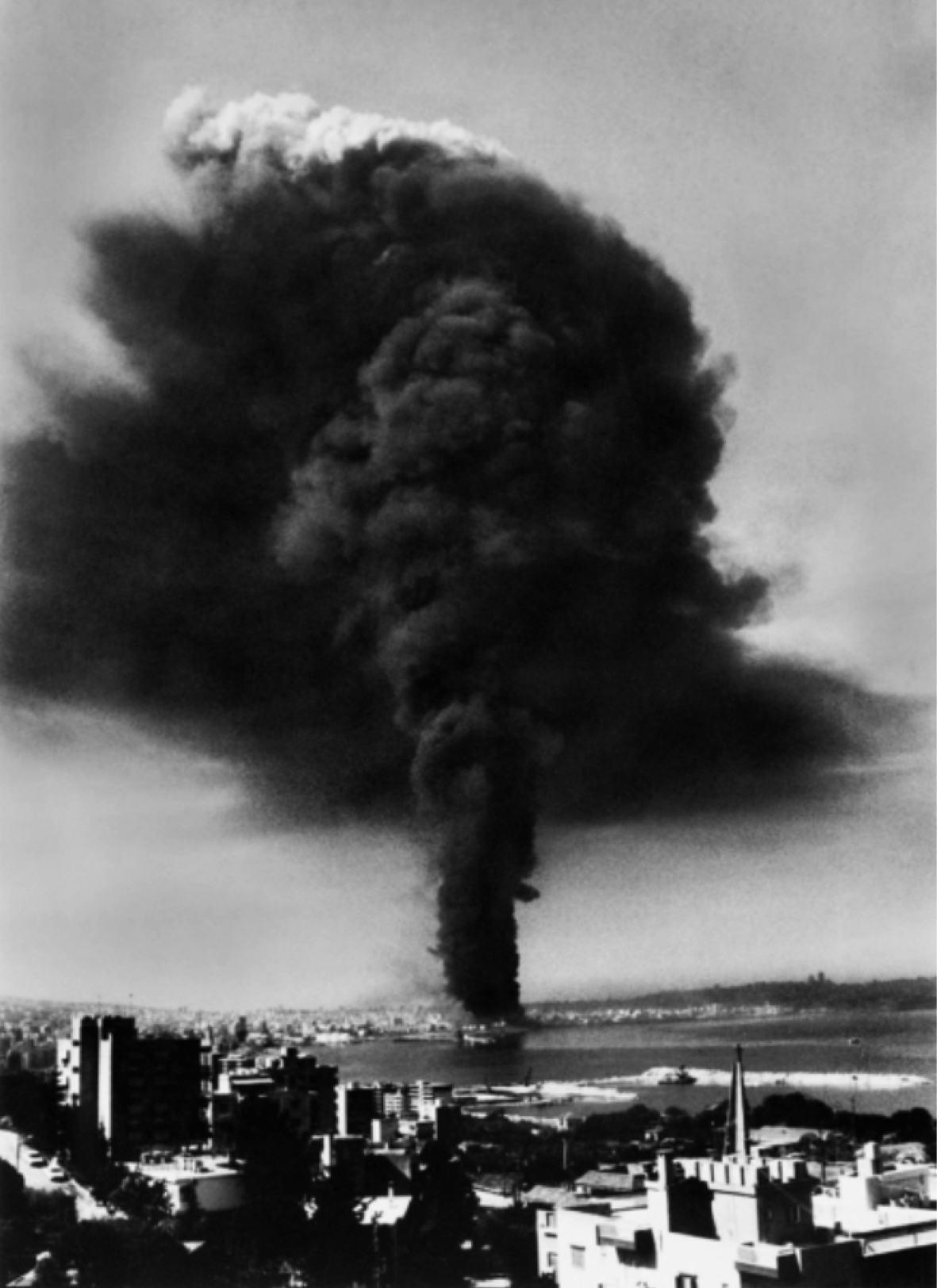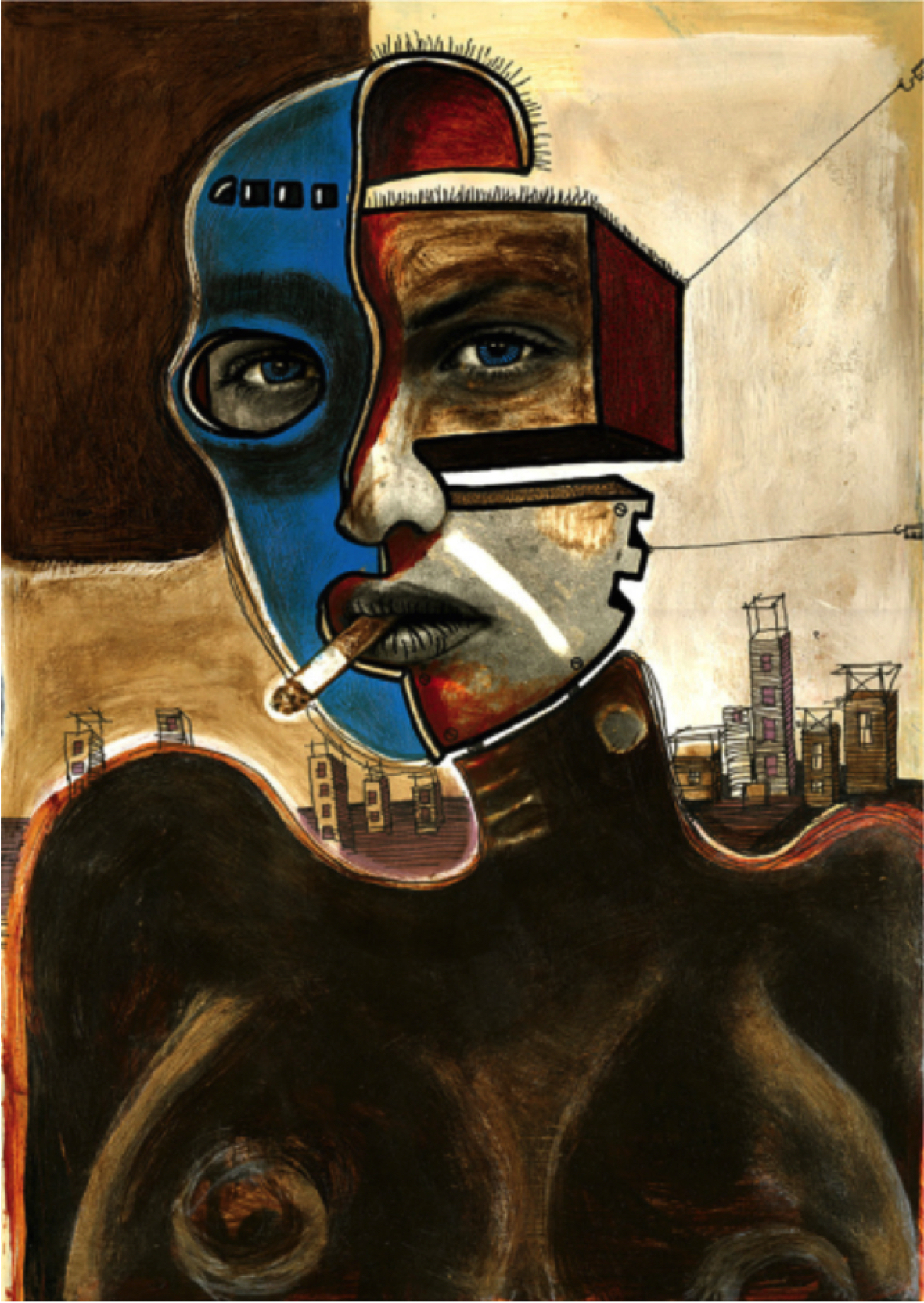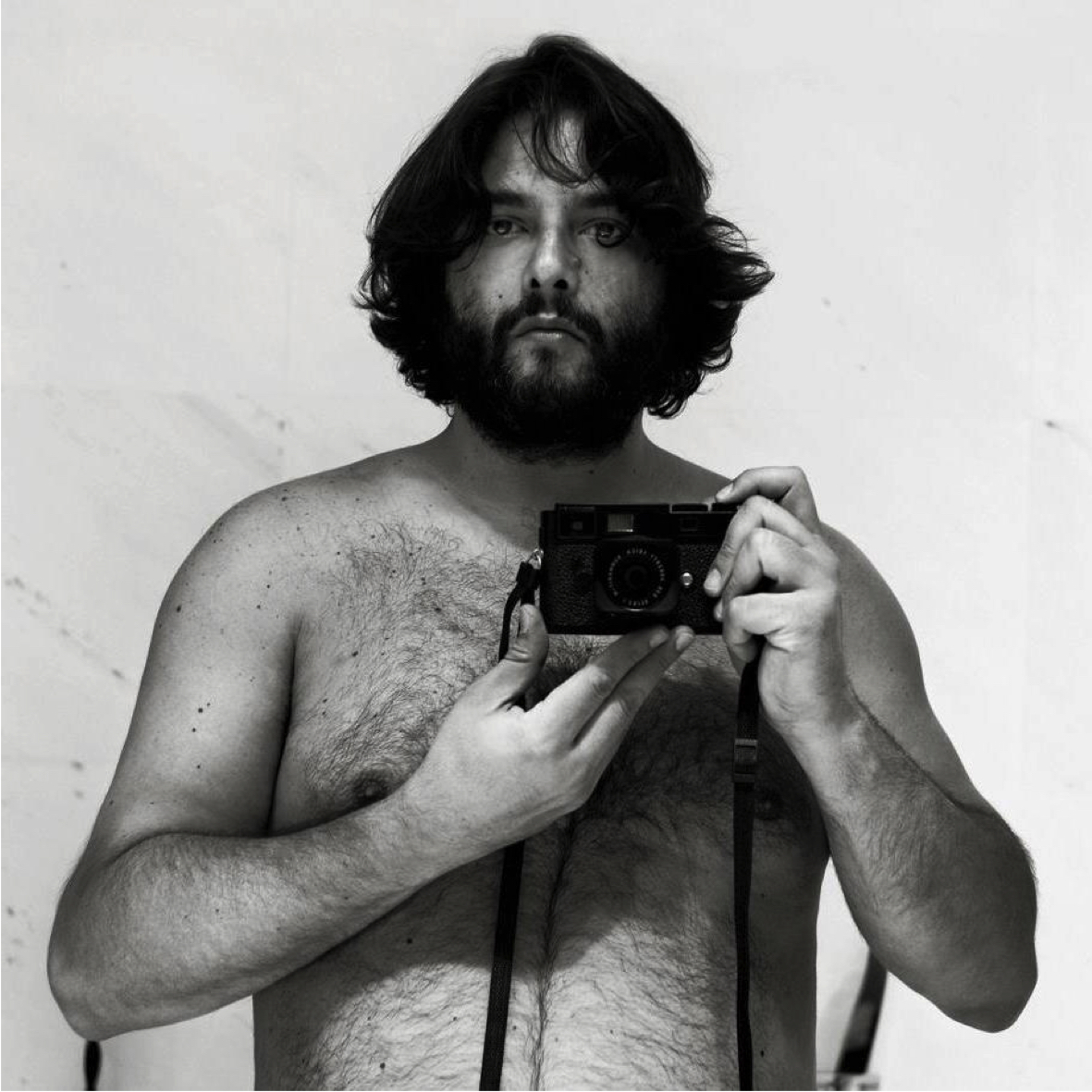Provocative. Sensual. Surreal. Welcome to the world of Joe Kesrouani.
Joe Kesrouani is a busy man. Recently, he took part in a project entitled Hoods for Heritage, wherein the Porsche Centre in Lebanon offered 16 artists the chance to decorate the bonnet of its 911 model in any way they pleased.
Kesrouani’s own contribution – a black and white halftone vinyl print of one of his more provocative pictures of a rear-view of a woman’s torso – was exhibited alongside the work of other young, aspiring Lebanese artists and designers such as Ayman Baalbaki, Zena El Khalil, and Nada Debs in the Villa Audi mansion in Beirut. As part of the initiative, the bonnets were later auctioned off in aid of the Lebanese National Heritage Foundation.
Though Kesrouani’s hood raised many eyebrows due to its relatively risqué subject matter, with critics remarking that it would ‘not look out of place on the hood of Hugh Hefner’s private Porsche’, it raised an impressive 30,000 USD for the Foundation. Although the Hoods initiative was a huge success artistically for Kesrouani, he did not make so much as a penny out of it.
The image with which Kesrouani chose to adorn his Porsche hood, with its tongue-in-cheek German title, Ferdinand und die Frauen (lit. Ferdinand and the Women), recalled the overtly pornographic German films of the 1960s, and in using such a work, one cannot help but wonder if Kesrouani was poking fun at the image of the car as a dated testosterone-fueled trophy.
In the artist’s own words:
I chose the image because the shape of the woman’s torso fitted the hood of the Porsche perfectly. Of course, there are a lot of sexual connotations as to how men view and pay special attention to cars and women; however, the title actually refers to Ferdinand Porsche, or ‘Ferry’ Porsche, the original Austrian designer who also helped build the Volkswagen Beetle for Adolf Hitler in the 1930s. This was a car built for the family that could be driven by women. I think that there is irony there, somewhere.
Kesrouani’s apparent fixation on the female form, and his stark, unabashed view of it was quite unnerving to many of his audiences, and the organisers of the exhibition even went so far as to suggest that Kesrouani pixelate his original photograph, to render it less ‘shocking’ to viewers.
The Artist
Joe Kesrouani was born in Beirut, although he spent his student and adolescent years in Paris, where he studied architecture at the Ecole d’Architecture de Paris la Villette. It was there that he taught himself to paint and take photographs, as a means of expressing himself and ‘recording’ the world around him – a world which strangely contrasted with his native Beirut, where he regularly returned to witness the devastation brought by the Civil War.

Chronic
While learning the tools of the trade as a photographer in his early teens, Kesrouani was particularly influenced by the bold black and white photographs of Robert Mapplethorpe, Dick Avedon, and Henri Cartier-Bresson, whom he greatly admired. Over time, he slowly developed his own style of photography, employing the honesty, curiosity, and playfulness of the Magnum masters, while at the same time adding a charged sexual confidence, as well as a dramatic Mediterranean sensibility. The photos in his Beirut series – one of his most iconic – present stark views of the city as seen from a bird’s eye view, having at once the aesthetic of a postcard, as well as the look and feel of shots taken by bombers from above.
His paintings and his photographs are laden with a certain magic, rendering them bold and shocking, yet at the same time, tender and harmonious
However, it is in his photographic portraits that Kesrouani’s immense talent manifests itself to the fullest. In his portraits, Kesrouani manages to capture the soul of his subjects, particularly through their eyes, poses, and gestures. Portraits of musical and artistic personalities such as the red-lipped, feather boa-clad jazz singer Lisa Hunt, the mysterious, cigarette-toting Charbel Haber (of Scrambled Eggs fame), and the cool, calm, and collected Mona Hatoum (the internationally-renowned artist) are just a few examples of the intensity and poignancy of Kesrouani’s photographs at their most evocative.
Earlier this year in April, Kesrouani met with a troupe of dancers who organised the Beirut International Platform of Dance. As part of the collaboration, he set up photo shoots for an exhibition to run alongside the festival, at the FFA Private Bank in Beirut. In the series of photographs he took, entitled Gravity, one can clearly see a natural progression from his previous portrait work, as well as a focus on the human figure, and an added emphasis on movement and patterns. In this imaginative series, the whirling propeller-like subjects capture the viewer’s attention in their streaming white clothes, writhing as if endowed with wings.

The Envelope
Later, as part of Design Week 2012, Kesrouani joined forces with fashion accessory designer Johnny Farah for an innovative campaign in Farah’s boutique shop, situated in Beirut’s shopping district of Saifi Village. For this particular campaign, the artist photographed over 70 passers-by, who posed with Farah bags pulled over their heads, and later printed the photographs onto bags of their choice. As the participants had bags pulled over their heads, Kesrouani had hoped that they would dare to strike imaginative or risqué poses. ‘I am sure if it had been in London or Paris, people would have been a little more bold. It was fun though’, he later remarked. This is typical of Kesrouani, as although he has learned not to expect much in the streets of Beirut, where people are so reserved and self-aware, he nonetheless does not desist in hoping and striving. The photographs in the series – which symbolise the anonymity of young pro-democracy revolutionaries in Arab countries - are part of a larger collection that Kesrouani is compiling.
So – what’s next for this young, innovative, and talented artist? ‘I would like to live on my art, and to have the time to create new shapes and work on new ideas’, he says. Kesrouani never seems to have any time for anything, although that is because he never stops working – somewhat similar to the white rabbit from Alice in Wonderland. Having barely completed his work for the Hoods for Heritage project, he is already working on a new undertaking, wherein he is merging his photography with his love for painting. A nod to his early years spent working as a club DJ, Kesrouani refers to his latest works as ‘remixed photographs’. Blending the stylised quality of his photographs with his paintings, Kesrouani has created expressive and surrealist scenes, which are nothing short of startling. Exploring themes such as loneliness, isolation, and longing, as well as feelings of liberation through music and wonder via bold and muted colours, scurried pencil lines, and various perspectives, his new works mark a fresh trajectory in his artistic career. Though he refuses to admit it, art for Kesrouani seems to be more of a lifestyle than a means of making a living. Both his paintings and his photographs are laden with a certain magic, rendering them bold and shocking, yet at the same time, tender and harmonious.
Kesrouani’s new works will soon be exhibited at Beirut’s SMO Gallery in early 2013.

